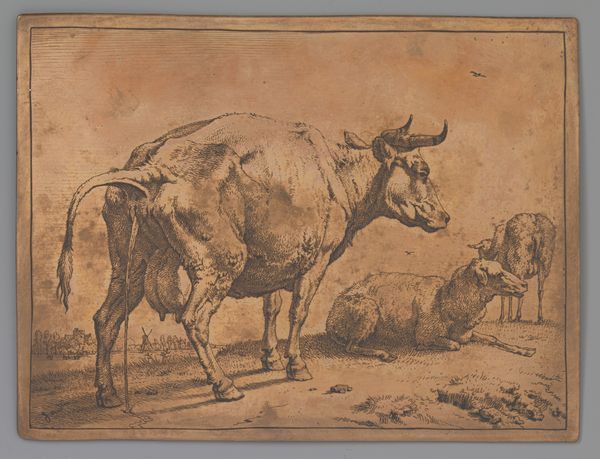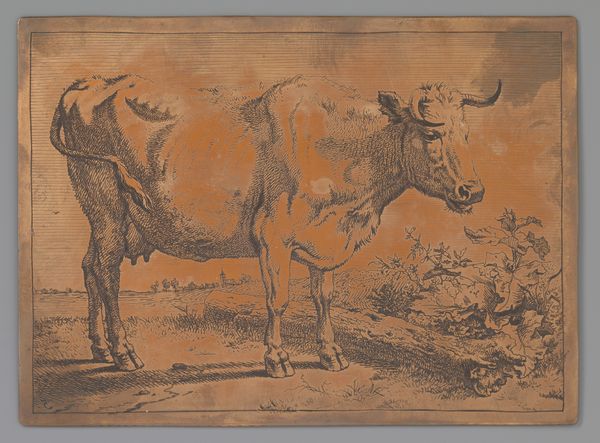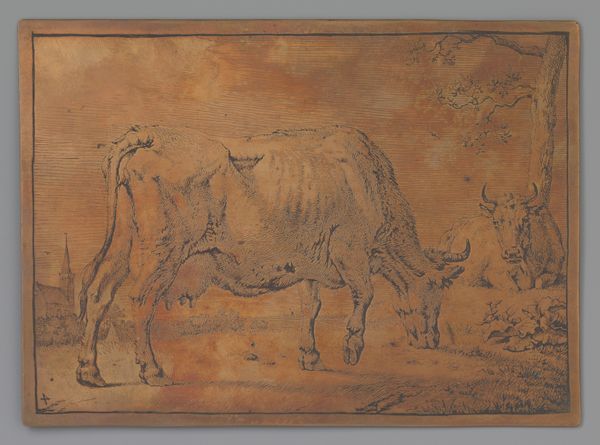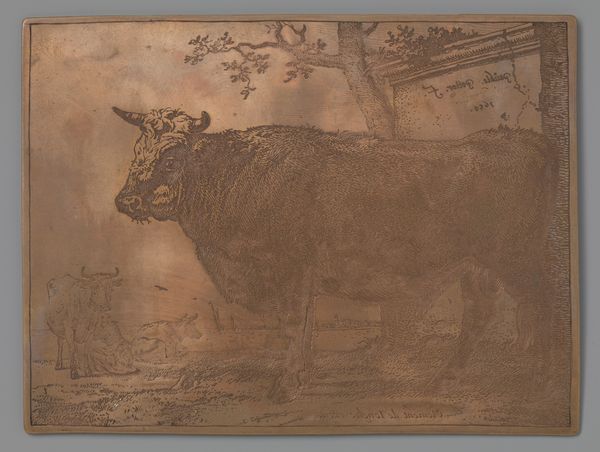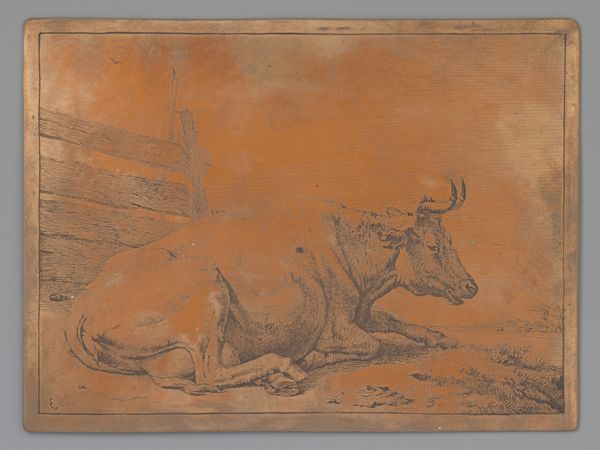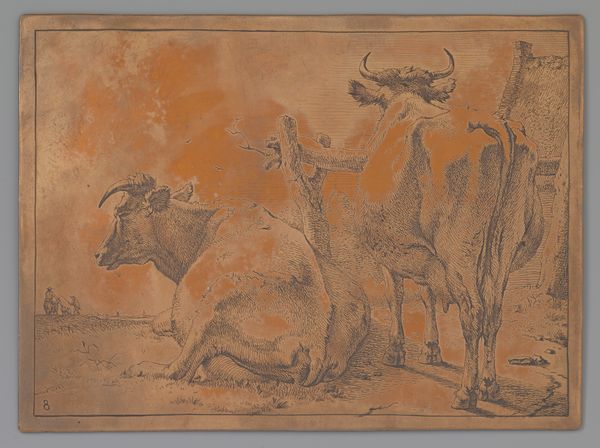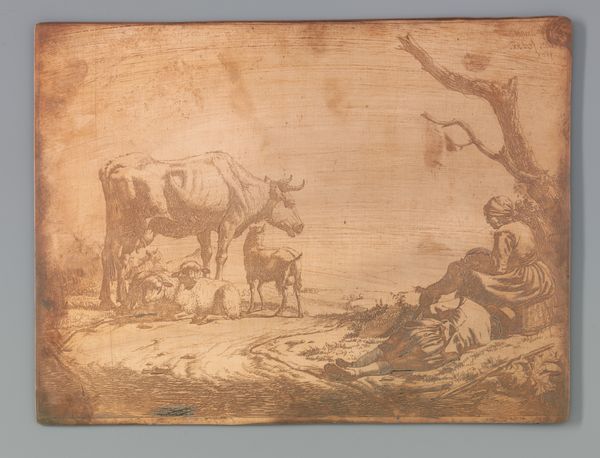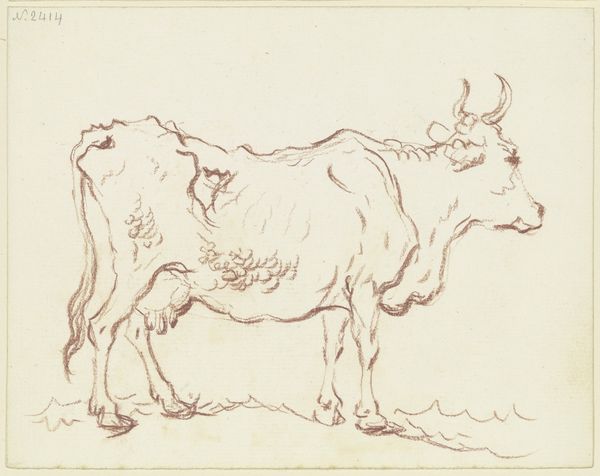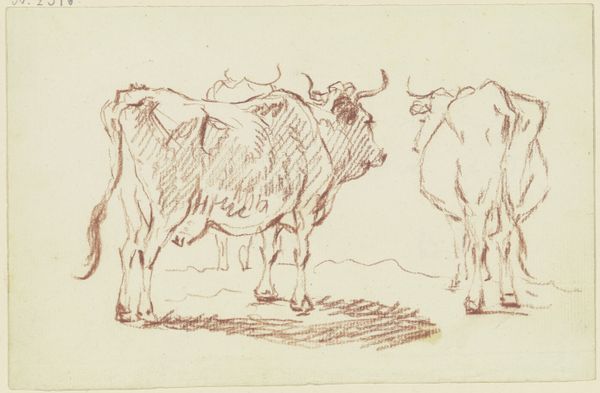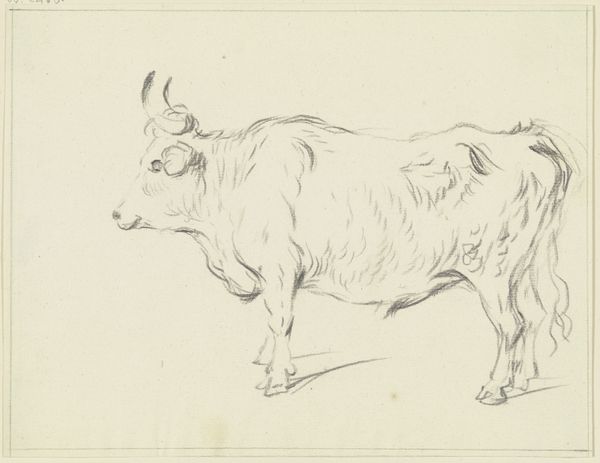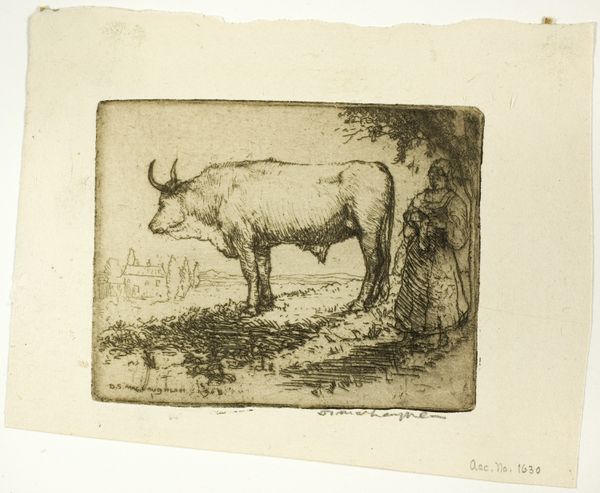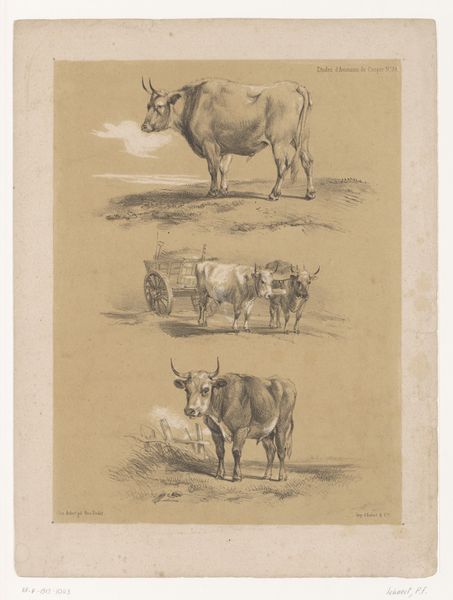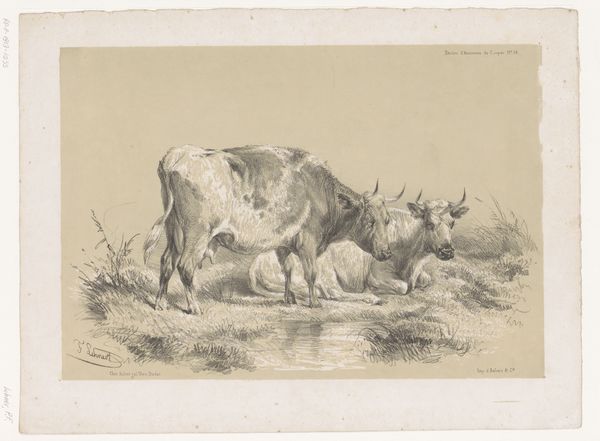
drawing, paper, ink, pencil
#
drawing
#
ink painting
#
dutch-golden-age
#
landscape
#
paper
#
ink
#
coloured pencil
#
pencil
#
genre-painting
#
realism
Dimensions: height 108 mm, width 148 mm
Copyright: Rijks Museum: Open Domain
Curator: Looking at Paulus Potter's "Staande en liggende koe," dating back to 1650, which is held here at the Rijksmuseum, I'm struck by the grounded stillness it evokes. What are your first thoughts? Editor: I’m immediately taken by the interplay of line and mass. The careful hatching creates a real sense of volume, making these cows present and weighty, yet they almost blend in with the background, so much that their outlines vanish. Curator: It's fascinating to consider that the work aligns with broader socio-economic shifts. During the Dutch Golden Age, livestock ownership shifted, influencing representations of class and status. This drawing offers a window into how animals, and the natural world generally, became markers of value and belonging. Editor: Yes, but Potter’s expert deployment of pencil and ink should also be a major focus. Note the detail given to texture—the animal's coat contrasts remarkably with the flatness of the background sky, a technique to foreground its presence within the artistic field. Curator: I would like to point out, too, that art historians like Svetlana Alpers have explored how Dutch art during this period elevated representations of ordinary life—a profound democratic impulse made evident through Potter's attentive rendering. It reflects larger cultural shifts regarding the rise of a merchant class and re-evaluations of labour and land use. Editor: I cannot disagree with that, of course, but without diminishing those contextual concerns, consider instead how these graphic techniques support the artwork's formal composition. The strong diagonals of the standing cow offset by the horizontality of the reclining one create dynamic tension. Curator: I appreciate how your focus on composition underscores the tension between the foregrounded animal and a relatively undefined setting. Potter's decisions regarding how to balance realism and abstraction invite interpretation. I am always asking questions about this representation as to our relationships with animals. Editor: Right. Potter masterfully draws attention to detail—light, texture, depth—through skillful artistic applications. I always come back to the artwork and its elements first and foremost. Curator: Studying the work, and considering how its values are deeply contextualized is an opportunity to really get inside that tension and recognize something essential about that moment in history. Editor: Perhaps, and it gives me further insight on the artistry on display within Potter's work.
Comments
No comments
Be the first to comment and join the conversation on the ultimate creative platform.
